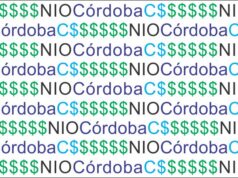This week, the National Assembly of the Republic of Nicaragua was presented with the Annual Management Report for 2020 from the governing body of Nicaraguan financial institutions.
“2020 saw a significant increase in deposits, up by 26,815 million Córdobas (US $667 million) or a growth of 21% when compared to 2019.”
The Superintendence of Banks and Other Financial Institutions (Superintendencia de Bancos y Otras Instituciones Financieras – SIBOIF by its acronym in Spanish) concluded that the 2020 results were positive when the effects of the Covid-19 pandemic as well as two back to back devastating hurricanes were taken into consideration.
Luis Ángel Montenegro, the SIBOIF Superintendent reported that in 2020, his staff had redoubled their efforts in supervision, inspection and scrutiny of the financial sector to guarantee the stability and maintain the functioning of all financial institutions.
Montenegro pointed out that the National Financial System revealed a significant increase in deposits in the order of 26,815 million Córdobas (US $667 million) or a growth of 21% when compared to the previous year, 2019.
SIBOIF approved 11 new regulations (4 that were subject to reform) aimed at establishing temporary credit conditions and reintegrating credit activities. They approved a temporary reduction in the minimum payment of credit card balances from 4% to 2% in order to ease the payment conditions for some 190,000 cardholders.
Even with the restrictions of Covid-19 related health and safety concerns, the SIBOIF staff completed some 183 inspections of various banks, financial institutions, insurance companies and securities. The team focused on the verification of regulatory compliance and timely actions in risk management by the various Nicaraguan financial institutions inspected.
As its full title suggests, the Superintendence of Banks and Other Financial Institutions is the authority in charge of authorizing, supervising and monitoring all banks, branches and banking agencies that operate in the country as well as non-bank financial institutions that operate with public resources.








As alway thanks Mr K
Comments are closed.